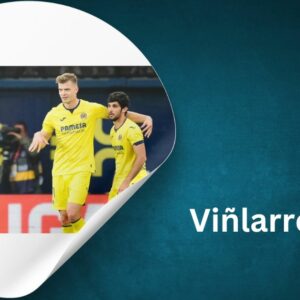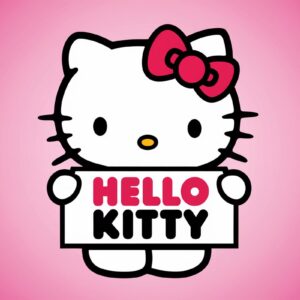Nestled in the heart of Spain’s Valencian Community, Viñlarreal, commonly known as Villarreal, beckons with a blend of rich history, vibrant culture, and sporting prowess. Home to the renowned Villarreal Club de Fútbol, this town resonates with the echoes of medieval origins and modern achievements.
From its picturesque streets to the hallowed grounds of Estadio de la Cerámica, Viñlarreal captivates visitors with its architectural marvels and cultural festivals. With a strong emphasis on agriculture, particularly citrus farming, Viñlarreal thrives as an economic hub while preserving its cultural heritage through museums and annual celebrations.
Explore Viñlarreal’s dynamic blend of past and present, where every corner tells a story of resilience, community, and passion.
A Brief History of Viñlarreal
Founded in the early 13th century by King James I of Aragon, Viñlarreal, originally named Vila-real, derives its name meaning “Royal Village” in Valencian.
Over the centuries, this town has evolved from its medieval roots into a thriving modern municipality celebrated for its significant contributions to agriculture, especially in citrus farming, and its lively cultural activities and events.
Villarreal Club de Fútbol (Villarreal CF)
Villarreal CF, established in 1923, has become a symbol of pride for the town. The club, nicknamed “El Submarino Amarillo” (The Yellow Submarine) due to their yellow kit, has had a remarkable journey, rising from lower leagues to consistently competing in La Liga, Spain’s top football division.
Achievements and Milestones
- European Competitions:
Villarreal CF has participated in various European competitions, including the UEFA Champions League and the UEFA Europa League, where they reached the semifinals multiple times and won the Europa League in 2021.
- Domestic Success:
The club has consistently performed well in La Liga, securing top positions and qualifying for European competitions regularly.
Key Players and Managers
Over the years, Villarreal CF has seen many talented players and managers who have contributed to its success. Notable figures include:
- Marcos Senna:
A key midfielder who played a crucial role in the club’s success during the mid-2000s.
- Juan Román Riquelme:
An Argentine playmaker known for his creativity and vision.
- Unai Emery:
The manager who led Villarreal CF to their Europa League triumph in 2021.
The Impact of Viñlarreal on Spanish Football
Villarreal CF’s success has had a significant impact on Spanish football. The club’s emphasis on developing young talent and maintaining financial stability has been a model for other clubs.
Their youth academy, one of the best in Spain, has produced many players who have gone on to have successful careers both domestically and internationally.
Viñlarreal Beyond Football
While Villarreal CF is a cornerstone of Viñlarreal’s identity, the town offers a plethora of additional attractions.
Visitors can immerse themselves in its rich cultural heritage, marvel at its stunning architecture, and explore its flourishing agricultural industry, which is particularly renowned for its citrus farming.
Cultural Heritage
Viñlarreal is home to several historical landmarks, including:
- Basílica de San Pascual Baylón:
A significant religious site dedicated to Saint Paschal Baylón, the town’s patron saint.
- Església Arxiprestal de Sant Jaume:
A Gothic church that dates back to the town’s founding.
Festivals and Events
The town hosts various festivals throughout the year, celebrating its history, culture, and agricultural roots. Notable events include:
- Festes de Sant Pasqual:
Celebrations in honor of Saint Paschal Baylón, featuring parades, music, and traditional activities.
- Fira de la Taronja:
An annual orange fair showcasing the region’s citrus production.
Economic Contributions
Viñlarreal’s economy is heavily influenced by agriculture, particularly the cultivation of citrus fruits.
The town’s fertile soil and favorable climate make it an ideal location for farming, and its produce is renowned for its quality both in Spain and internationally.
Modern Developments in Viñlarreal
In recent years, Viñlarreal has seen significant development, with improvements in infrastructure, education, and healthcare. The town continues to grow, balancing its rich history with modern advancements.
Infrastructure and Transportation
Efforts have been made to enhance Viñlarreal’s infrastructure, making it more accessible and improving the quality of life for residents.
The town is well-connected by road and rail, facilitating easy travel to and from major cities like Valencia and Barcelona.
Education and Healthcare
Viñlarreal boasts excellent educational institutions, from primary schools to higher education facilities.
The town’s healthcare system is also robust, providing residents with access to quality medical services.
Visiting Viñlarreal
For those interested in visiting Viñlarreal, the town offers a mix of historical sites, cultural experiences, and sporting events. Key attractions include:
- Estadio de la Cerámica:
Home of Villarreal CF, where fans can watch live football matches.
- Museu de la Ciutat Casa de Polo:
A museum showcasing the town’s history and cultural heritage.
- Parc de la Maiorasga:
A beautiful park perfect for relaxing and enjoying nature.
Conclusion
Viñlarreal is a town renowned for its seamless blend of history, culture, and modernity, creating a vibrant tapestry of past traditions and contemporary innovations.
From its medieval origins to its current status as a hub of football excellence and agricultural prowess, Viñlarreal offers something for everyone.
Whether you’re a football fan, a history enthusiast, or simply looking to explore a charming Spanish town, Viñlarreal is a destination worth visiting.
FAQs
1 – What is Villarreal CF?
Villarreal CF is a prominent football club based in Viñlarreal, competing in La Liga and European competitions.
2 – Why is Villarreal CF called “The Yellow Submarine”?
The nickname comes from the club’s yellow kit and their ability to rise through the football ranks.
3 – What are the main attractions in Viñlarreal?
Key attractions incluye Estadio de la Cerámica, Basílica de San Pascual Baylón, and Museu de la Ciutat Casa de Polo.
4 – How is the economy of Viñlarreal?
The economy is primarily driven by agriculture, especially citrus farming, and contributions from the football club.
5 – What is the significance of the Basílica de San Pascual Baylón?
It is a major religious site dedicated to Saint Paschal Baylón, the patron saint of Viñlarreal.
6 – What languages are spoken in Viñlarreal?
The primary languages spoken are Valencian and Spanish.




